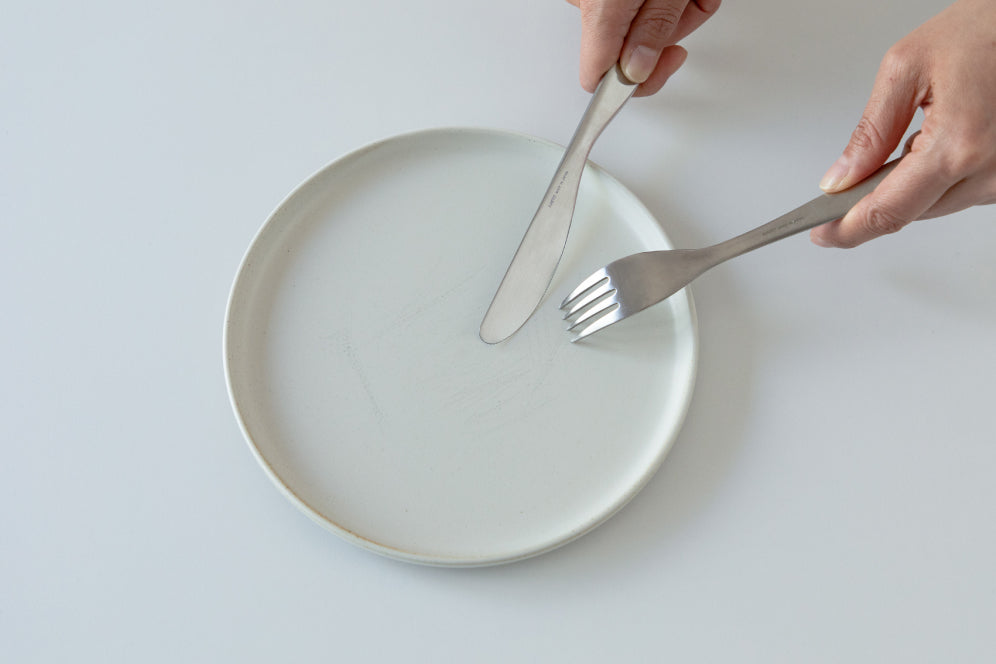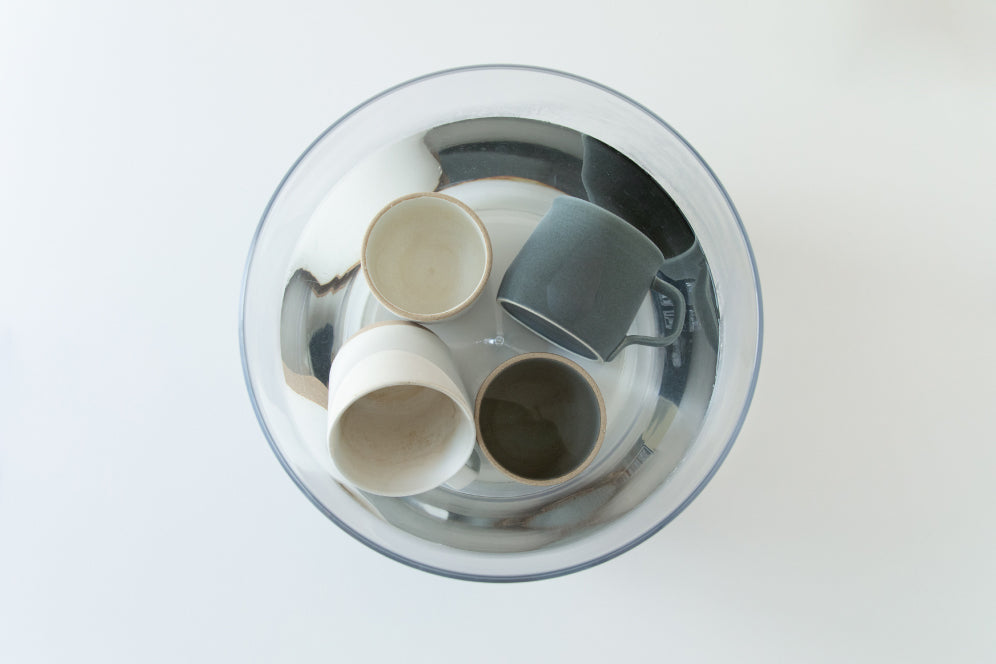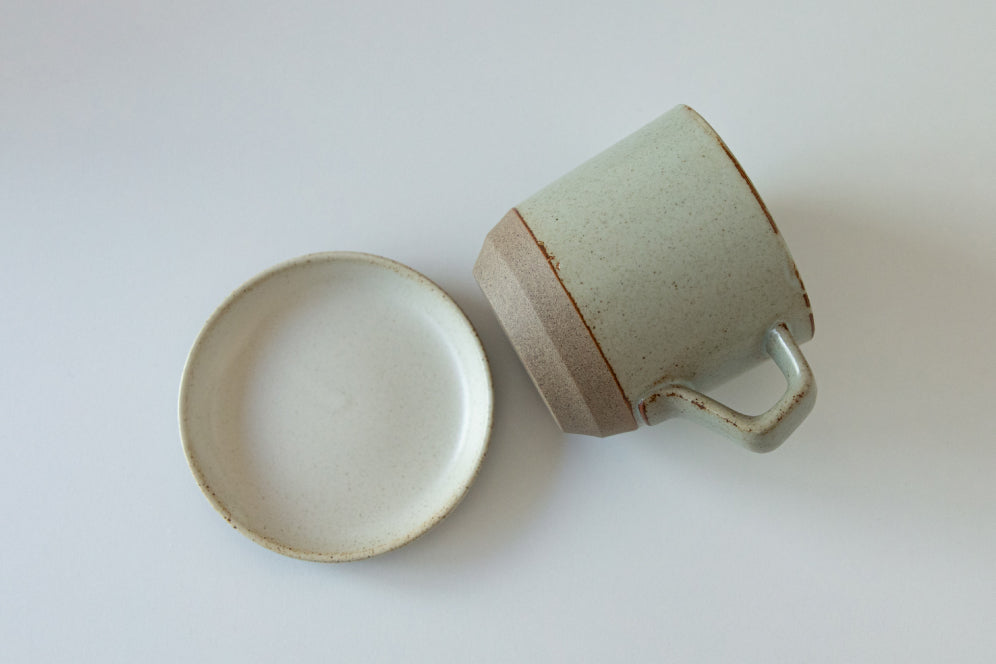Characteristics of Porcelain & Earthenware
"Porcelain" and "earthenware" are types of "ceramic," a broad term for clay-based products that are shaped and hardened by heat. Porcelain, used in many of KINTO's tableware products, is characteristically hard, dense, and durable. It is also water-resistant due to the composition of its raw materials and the high firing temperatures. Our TERRA collection is categorized as earthenware. While earthenware is typically porous, TERRA has a lower water absorption rate than standard earthenware, allowing it to be used similarly to porcelain.
"Porcelain" and "earthenware" are types of "ceramic," a broad term for clay-based products that are shaped and hardened by heat. Porcelain, used in many of KINTO's tableware products, is characteristically hard, dense, and durable. It is also water-resistant due to the composition of its raw materials and the high firing temperatures. Our TERRA collection is categorized as earthenware. While earthenware is typically porous, TERRA has a lower water absorption rate than standard earthenware, allowing it to be used similarly to porcelain.
Care and Maintenance
▼ Daily Care
Wash with neutral dishwashing detergent and a soft sponge, and dry thoroughly before storing. When using a dishwasher, place it on the rack so it does not come in contact with other dishes.
▼ Metal Marks
After use of metal utensils, gray marks may become noticeable on the surface of tableware. These are called metal marks, and they are caused by the friction between porcelain and metal. If the porcelain products have a clear glaze, these marks are not easily noticeable. In light color or matte glaze products , they may become more apparent. We recommend cleaning the traces of metal with citric acid.
▼ Daily Care
Wash with neutral dishwashing detergent and a soft sponge, and dry thoroughly before storing. When using a dishwasher, place it on the rack so it does not come in contact with other dishes.
▼ Metal Marks
After use of metal utensils, gray marks may become noticeable on the surface of tableware. These are called metal marks, and they are caused by the friction between porcelain and metal. If the porcelain products have a clear glaze, these marks are not easily noticeable. In light color or matte glaze products , they may become more apparent. We recommend cleaning the traces of metal with citric acid.

[Steps to Clean Metal Marks]
1. Sprinkle citric acid on the metal marks and cover with a paper towel soaked in hot water.

2. After an hour or so, remove the paper towel and gently scrub with a melamine sponge.

*If the marks are still noticeable, cream cleansers such as Bar Keeper's Friend can also be used. Please rub gently with a wet cloth or soft sponge, since abrasive ingredients in the cleanser may cause scratches on the dishes if scrubbed excessively.
▼ Removing Stains and Odors for Porcelain
We recommend soaking and washing with a solution of baking soda or oxygen bleach.
▼ Removing Stains and Odors for Earthenware (TERRA)
We recommend soaking and washing with a solution of baking soda.
We recommend soaking and washing with a solution of baking soda or oxygen bleach.
▼ Removing Stains and Odors for Earthenware (TERRA)
We recommend soaking and washing with a solution of baking soda.

Unique Expressions of Ceramics
▼ Variegated Glaze
The glaze is applied by hand, one by one. As a result, there may be some variations in the texture and finish. We celebrate the subtly varying expressions among pieces as their charm and beauty.
▼ Yo-hen
Some products may take on a scorched-like appearance or show variance in color and luster due to a unique glaze effect called "yo-hen" in Japanese. Factors such as the level of oxygen and temperature affect the chemical reaction that occurs in the kiln, bringing about expressions that are unique and rich.

▼ Teppun
Some products intentionally use clay or glaze that is mixed with "teppun", or iron powder. It appears as black dots when fired and gives the products a depth of expression.
Heating
▼ Microwave for Both Porcelain and Earthenware
When using in a microwave, do not overheat or heat without water.
▼ Oven and Direct Flame for Porcelain
Do not use in an oven or over a direct fire as it may cause products to crack and break.
▼ Oven and Direct Flame for Earthenware (TERRA)
It can be used in the oven, but please ensure the temperature difference does not exceed 150°C and that the oven temperature remains below 300°C. Do not use it in ovens that emit direct flames. Heating frozen food in a preheated oven can damage the product, so please thaw the food before heating. To avoid cracks or damage, do not use it over direct fire.




